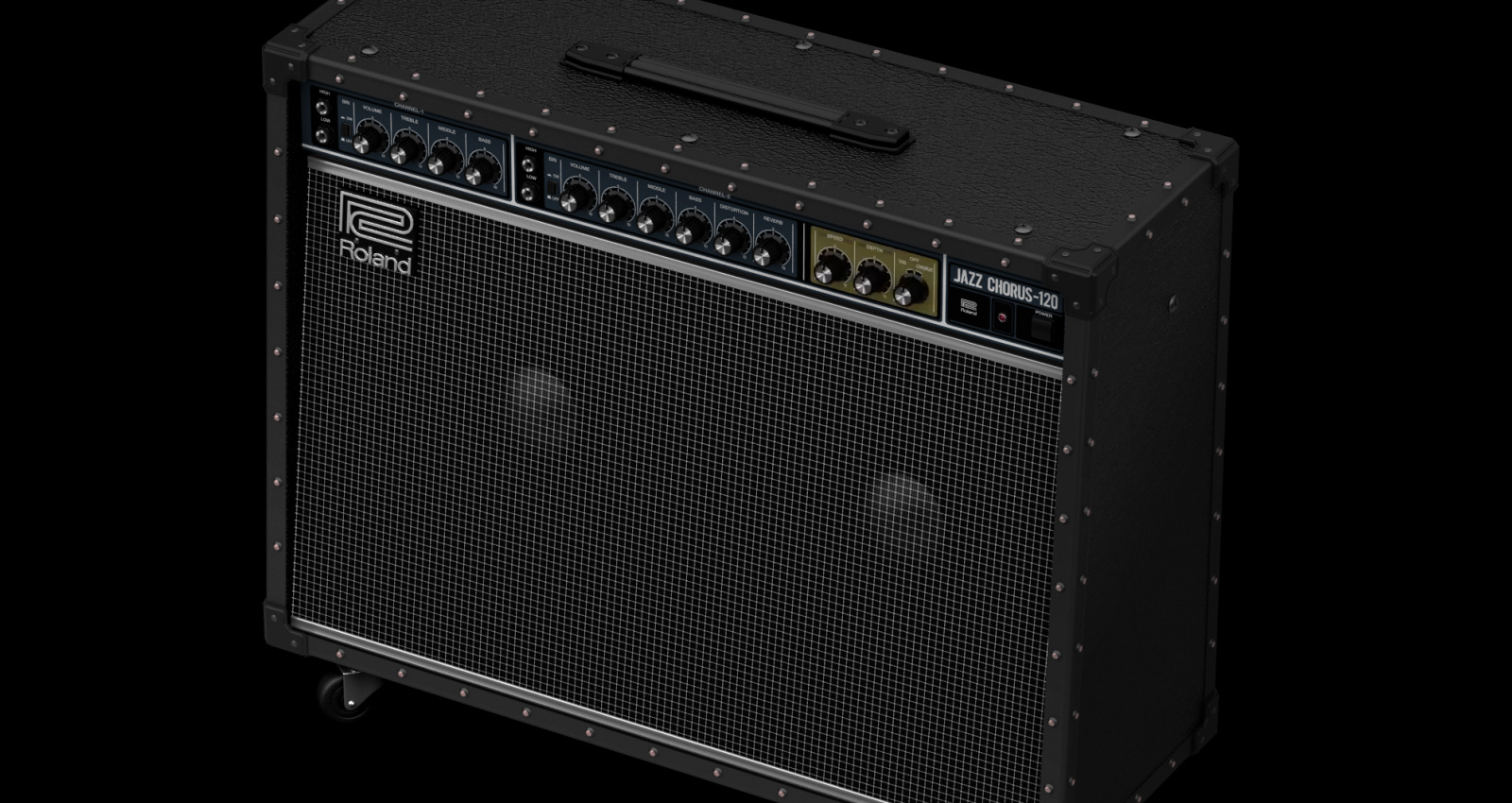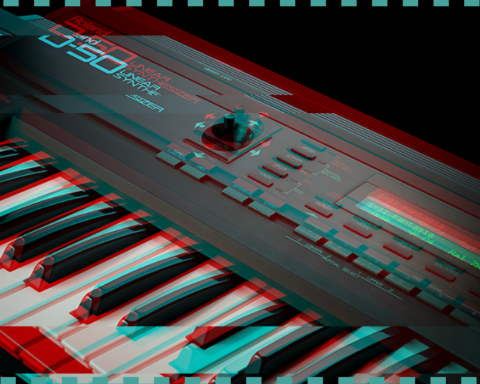It’s that tone—there’s no mistaking it. Clean but commanding. Pristine yet powerful. Proudly solid-state and sweetened by a spellbinding stereo chorus. It’s the sound of many of the greatest albums from the past half-century. The JC-120 crosses boundary lines of generation and genre from Albert King through Andy Summers to Wes Borland of Limp Bizkit. The amp was born in Japan, yet it’s been everywhere. In steady production since 1975 and remarkably unchanged, the JC-120 remains a backline benchmark. It set the bar for pure-as-the-driven-snow amp tone, and players still hold it up as the standard for clean. The JC-120 is a blank canvas for all who roll it onto their stages and into their sessions.

History In the Making
Perhaps the JC-120’s rebel spirit should come as no surprise. In 2022, Roland toasted its 50th anniversary, and the world reflected on the MI giant’s trailblazing history. The company’s early creative streak was breathtaking. Roland delivered the immortal RE-201 Space Echo delay in 1974 and rewrote the amp sector’s rulebook a year later with the original JC-120. Still, set against musical trends of the era, when tube stack breakup was the holy grail, the amp was a decided left-hand turn.
Pure And Simple
The JC-120 was a solid-state combo at a time when critics widely condemned transistor technology. Roland turned the absence of valves into a benefit. The company designed the amp to deliver the purest, cleanest, most crystalline tone possible without a hint of a tube amp pushed into the red. Even the name underlined those intentions. JC stood for Jazz Chorus, hinting at its pristine sound.
"Roland designed the JC-120 to deliver the purest, cleanest, most crystalline tone possible."
A New Scene
Almost overnight, the JC-120 flooded the music scene. The amp established its enduring reputation as the master of all genres. It did so while blowing away the cobwebs of an amp scene that had gotten bogged down in its dogma. “It came out at a time when there were a lot of no-nos in guitar culture,” says Johnny Marr, whose JC-120 was key to his jangle-with-attitude sound in The Smiths. “To use a Roland amp was very unusual and exciting.”
Marr credits the amp with playing a pivotal role in the evolution of his sonic thumbprint. “That was a big part of my sound, you know, that clean, chorus-y sound. It’s not really a surprise that your gear dictates the way you play, and so I was fortunate.” The amp remains a source of interest for his followers, many of them rabid toneheads. “The interesting thing is that now—many, many, many years later—kids still ask me about playing the JC-120. They like that sound.”
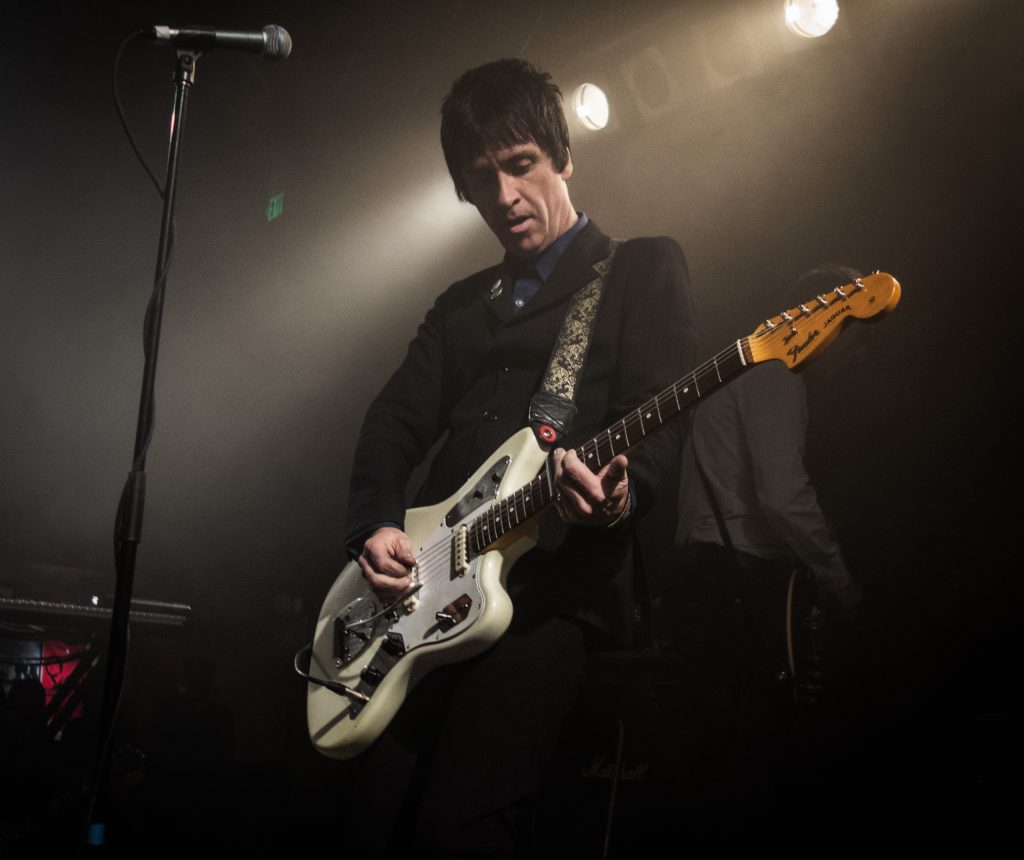
"It came out at a time when there were a lot of no-nos in guitar culture. To use a Roland amp was very unusual and exciting."
Johnny Marr
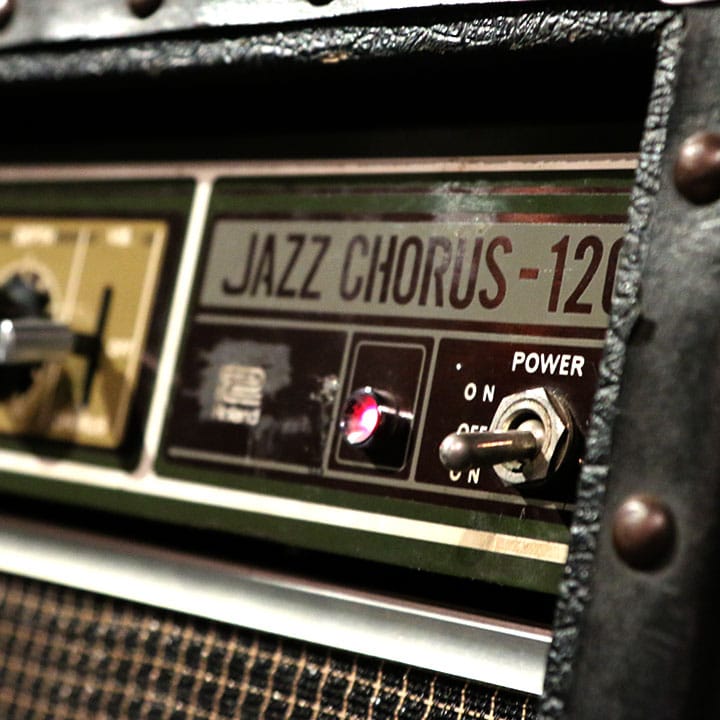
Chorus of Approval
But no celebration of the JC-120 would be complete without a salute to the amp’s near-mythical stereo chorus effect. In 1975, chorus was the preserve of boutique recording studios. Indeed, the notion of an amp offering the effect as a built-in feature verged on witchcraft. Even now, the biggest JC-120 revelation is the character of that inimitable Dimensional Space Chorus, as Roland billed it.
Alongside the genius of the Roland engineering team, there’s a crucial technical reason the JC-120’s chorus stands out. There is a single defining characteristic of chorus, a factor that makes guitar tones lush and epic. It combines dry and wet signals: one unmodulated, the other modulated, with a subtly different pitch and timing. Running both signals through individual speaker amps is feasible. Still, hearing the effect in true stereo—with each signal delivered by a dedicated speaker—is when chorus comes alive.
Producer Steve Levine (Culture Club, The Vapors) is effusive in his praise of the amp as a studio must-have. “If you want to add that expensive quality to a recording,” he says, “the JC-120, with its lush chorus sound, is the way to go.”
"If you want to add that expensive quality to a recording, the JC-120, with its lush chorus sound, is the way to go."
Steve Levine
"The Roland JC-120 has been a staple in my collection of amplifiers for as long as I can remember—probably from the day it
came out!"Andy Summers
Two in One
Some modern chorus pedals have stereo outputs; that only works if you own a pair of amps. The masterstroke of the JC-120 is that it effectively functions as two amps in one. Two independent power amps supply 60 watts apiece. When you activate chorus mode, the first speaker relays the wet signal while the second speaker delivers the dry. The result is a three-dimensional immersion, drenching every part it touches with atmospherics.
“Suddenly, chorus was this fantastic new sound for the guitar, and everybody had to get it,” reflects Andy Summers. His legendary Police guitar parts (including 1983’s US number one, “Every Breath You Take”) often utilized the JC-120 chorus. “In stereo, you could get this huge, shimmering sound coming out of a big PA system—pretty impressive.”
The JC-120 and the guitarist remained inseparable. “The Roland JC-120 has been a staple in my collection of amplifiers for as long as I can remember—probably from the day it came out!” Summers also found the amp took his beloved guitar synthesizers particularly well and proclaimed as much to Guitar Player in 1986.

"The sound mesmerized me. I had never heard an amp sound so pristine and beautiful. There was a shimmering clarity to every note."
Adrian Belew
Original Floor Model
At the time of the JC-120’s 1975 release, chorus as a standalone effect simply didn’t exist. BOSS released the BOSS CE-1 Chorus Ensemble in 1976 to recreate the effect in a floor-based format. This milestone pedal was both the first BOSS pedal and the world’s first chorus pedal, starting a whole line of legendary BOSS chorus effects including the classic CE-2 and others. They remain rig essentials, a testament to the magic of that original amp feature.
Generational Regeneration
The music scene has regenerated countless times since the ’70s, with a thousand guitar genres blowing up and burning out just as fast. However, while many hero amps got swept away as time passed, the JC-120 remained at the vanguard. Throughout the rock ‘n’ roll age, it gave each wave of new players the space to discover their sound.
Prog-rock virtuoso Adrian Belew was an immediate convert to the amp upon hearing it at a casual get-together in 1977. “The sound mesmerized me,” he recalls. “I had never heard an amp sound so pristine and beautiful. There was a shimmering clarity to every note.” He went on to use the amp on an impossibly influential series of albums including Frank Zappa’s Sheik Yerbouti, Lodger by David Bowie, Remain in Light by Talking Heads, and King Crimson’s Discipline.
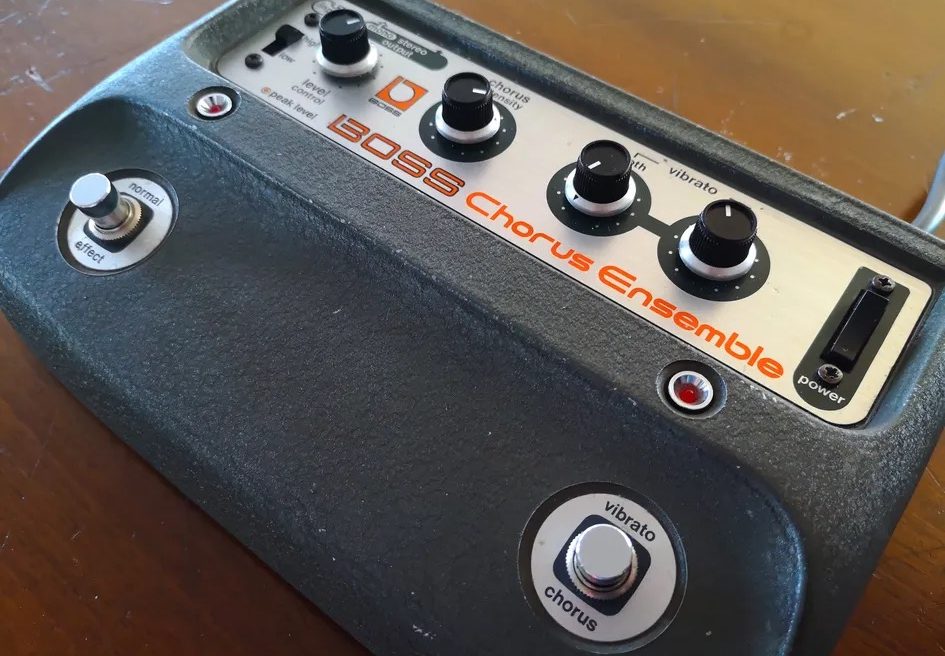
"The JC-120 with the 2x12 speaker setup—the way the phase works on the speakers—it's a magical sound."
Billy Duffy
Cult Classic
On paper, at least, there is little to link Belew with riff meister Billy Duffy of the Cult. It’s also hard to find common ground between singer-songwriter Jeff Buckley and James Hetfield of Metallica. Yet all the above favor the JC-120 sound for its immaculate sheen. Hetfield even described the amp as “my go-to forever” and used it for the spooky clean tones of “Welcome Home (Sanitarium)” and “One.”
Duffy is a JC-120 aficionado, relying on it as a primary color in the tonal tapestry of albums like Love and Sonic Temple. “I use the JC-120 for my clean sound, and I’ve always used it in combination with a valve amp. The chorus itself is really sweet,” Duffy says. After trying other JC variations he decided to stick with his go-to. “I just surrendered to the idea that the JC-120 with the 2×12 speaker setup—the way the phase works on the speakers—it’s a magical sound.”
"Shoegaze purists regard the JC-120 as the quintessential amp for achieving the swirling sound of the genre, exemplified by bands like Slowdive."
Enduring Popularity
Yes, the same amp inspired all these diverse players. And its ripples continue to spread to new JC players like The Vaccines’ Freddie Cowan and Jeremy Freedman of The Neighbourhood. Shoegaze purists regard the JC-120 as the quintessential amp for achieving the swirling sound of the genre, exemplified by bands like Slowdive. Perhaps in a sector where so many amps paint their owners into a corner, this legendary model bends to the vision of its user. Quite simply, the JC-120 is whatever you want it to be.
Most remarkable, the JC-120 has made this half-century odyssey without compromising and losing what made it unique. Flip the power switch of a modern JC-120. You’ll find the qualities that from 1975 remain, from the twin 12-inch speakers to the immortal Dimensional Space Chorus. Ultimately, it’s clear that the clean revolution has only just begun.
